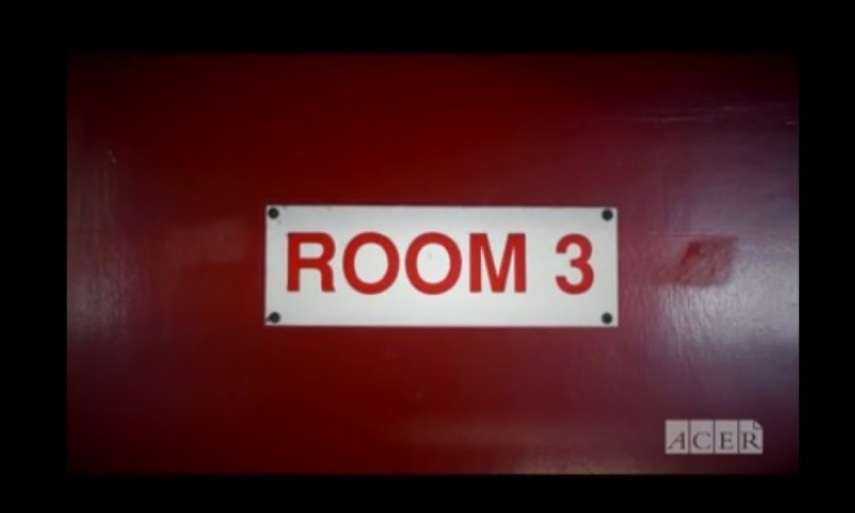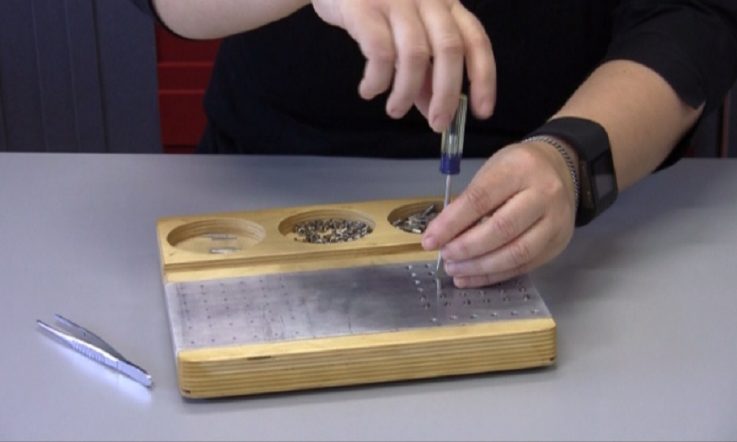Once a fortnight the Teacher team ventures down to Room 3 – the basement archives at the Australian Council for Educational Research.
Room 3 is home to a plethora of texts originating from way back when. Each fortnight we bring you choice titbits from some of our favourite historical titles via Facebook and Twitter.
If you happened to have missed some of our Room 3 gems, here is a list of what has recently been posted online. To access all quotes, click on the links - Volume 1.
Adams, J (1930). The Teacher's Many Parts. University of London Press Ltd.
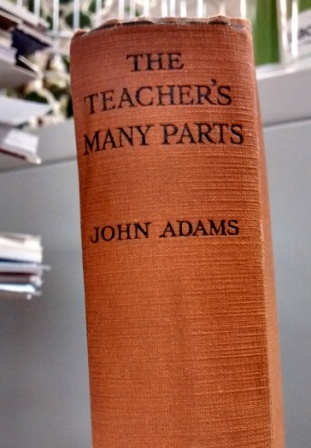
Chapter XIX - The Teacher as Traveller:
'The teacher can overcome the limitations inherent in the schoolroom only by easy access to the big busy world outside.' (Adams, 1930)
'There is so much to be seen and so little time to see it in, and all those gaping yellow beaks of their pupils at home waiting to be fed!' (Adams, 1930)
'After a good human holiday, the teacher comes back better fitted for his professional work ...' (Adams, 1930)
‘He has met different types of people, has experienced different ways of eating and drinking and playing: he has taken a deep bath in the great pool of humanity ...' (Adams, 1930)
'... when the teachers are still wearing the social sunburn that inevitably results from a happy holiday.' (Adams, 1930)
Jones, B. (1969, December). Educational Technology in Tomorrow's World. Visual Education, pp. 7-9.
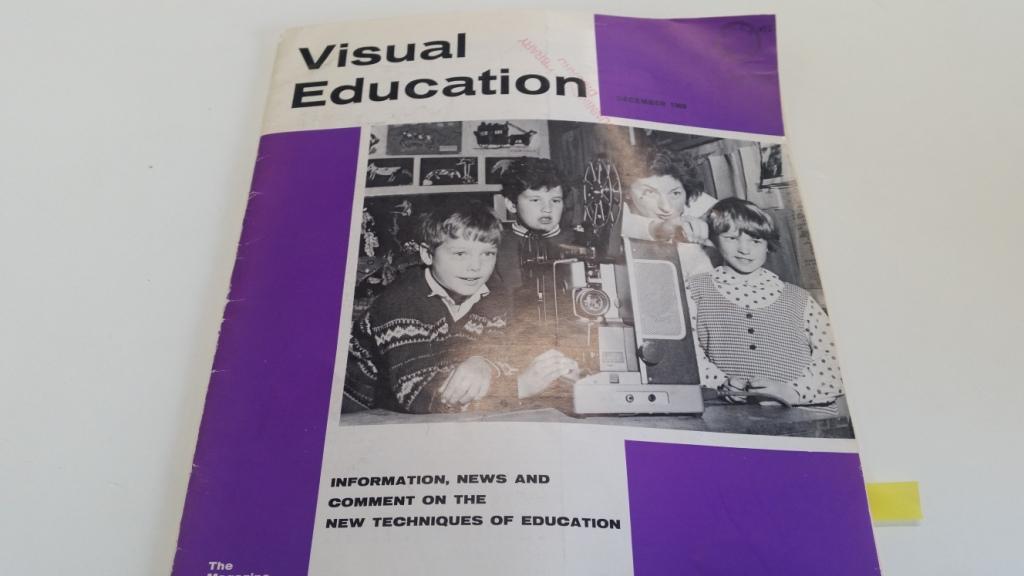
‘We know from observation and experience that the ability to teach develops and grows more effectively in those who experiment with methods, techniques and equipment, since they accept the philosophy that “where there is freedom to experiment there is hope to improve”. Their enthusiasm for new ideas ... is an expression of their desire to advance learning and to serve their pupils effectively.’ - an extract from Sir Brynmor Jones at the First International Conference of the Association for Programmed Learning and Educational Technology in London
Rivlin, HN., Herbert, S. (Ed). (1943). The Encyclopedia of Modern Education. Philosophical Library Inc: New York.
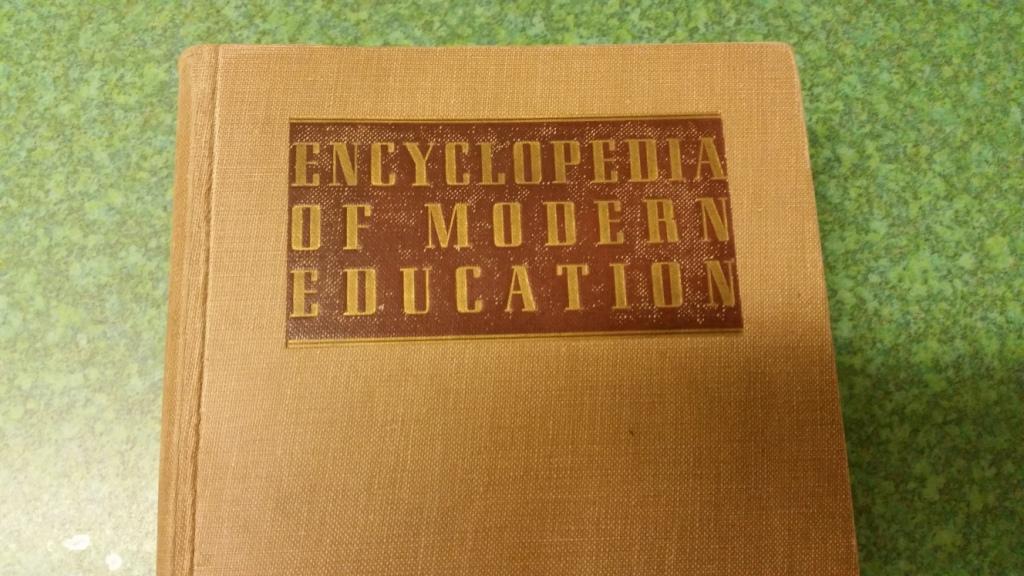
'For a child, play means in particular that there are no adult forces which constrain him , adult forces which keep him at the activity or which make him pursue the activity in a certain manner. Whatever values he may get from his play, he does not enter upon it because of these values. He plays because he enjoys it; when he does not, he stops playing.' - Encyclopedia of Modern Education (1943)
Connell, W.F (Ed). (1965). The Australian Journal of Education. Vol 9. Melbourne: ACER
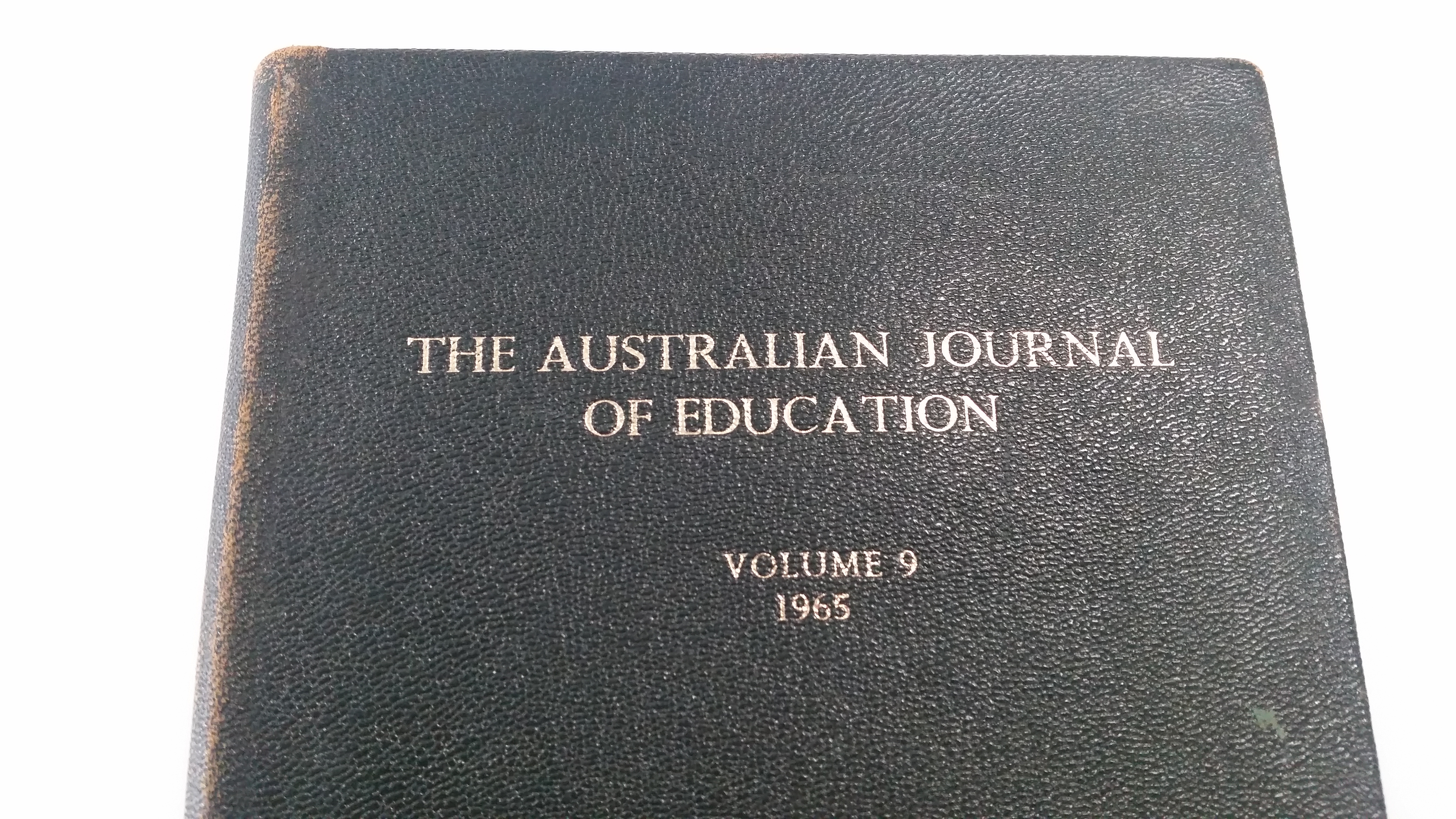
'The discovery and cultivation of each individual's particular talents was the major task confronting educational administrators and teachers.' - Dr HS Wyndham at the opening address of The Australian College of Education's Sixth Annual Conference in May 1965. Taken from Volume 9 of the 1965 Australian Journal of Education.
Mortensen, D., Schmuller, A. (1959). Guidance in Today's Schools. John Wiley & Sons Inc.
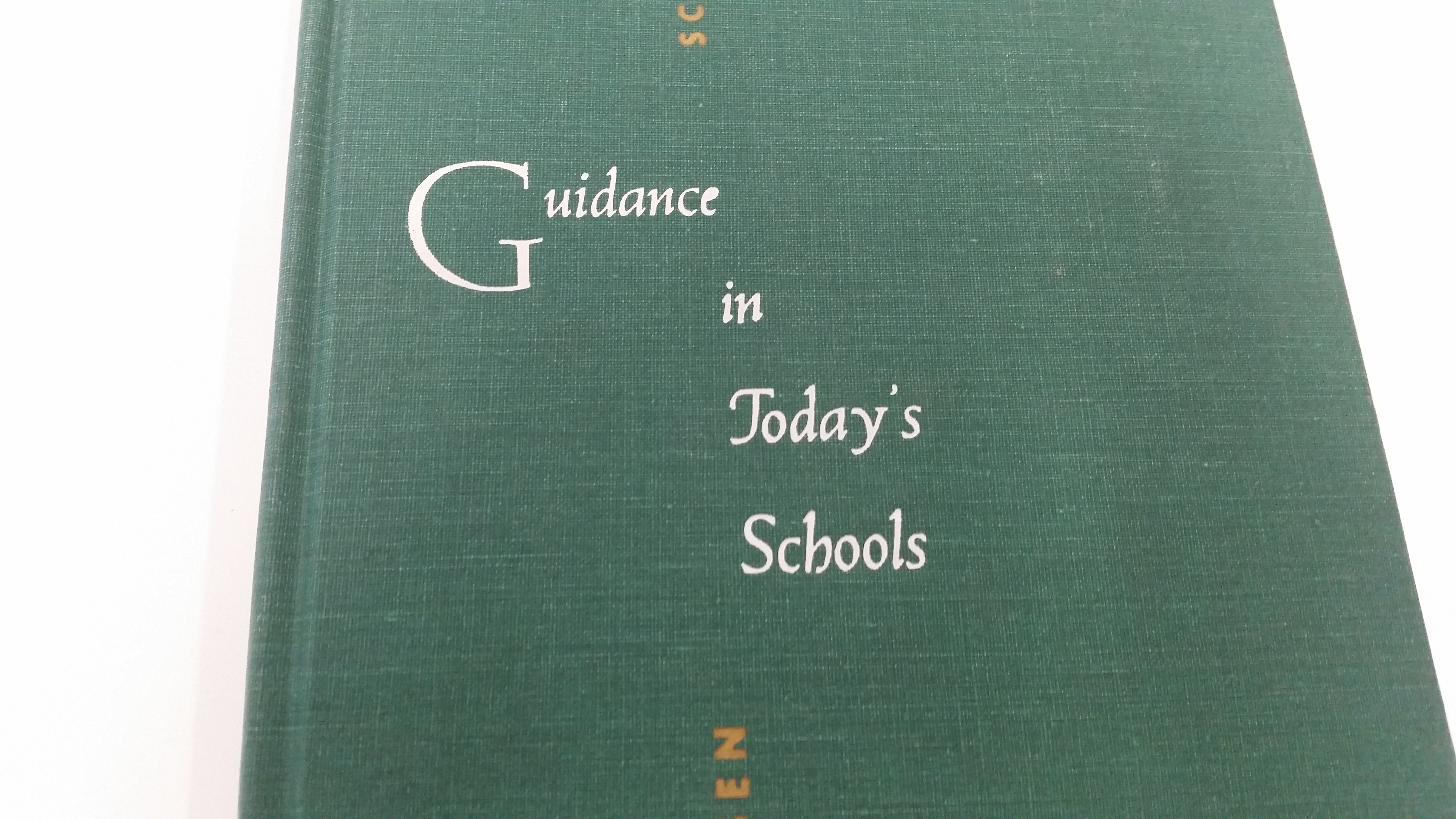
'Through providing appropriate experiences at each stage of development by combining their efforts, parents and teachers can help pupils contribute to the happiness and well-being of their families. In fact, the success the school has in carrying out this responsibility is often increased by the adequacy of parent-teacher relationships.' (Mortensen and Schmuller, 1959)
With role-playing, 'the [child] gains confidence ... through acquaintance with his future problems.' (Mortensen & Schmuller, 1959)
‘Role playing is ... a means for self-expression. It gives the [child] the opportunity to be seen in “action”.’ (Mortensen & Schmuller, 1959)
Witmer, J., Kotinsky, R. (Eds). (1952). Personality in the making. Harper and Brothers: New York.
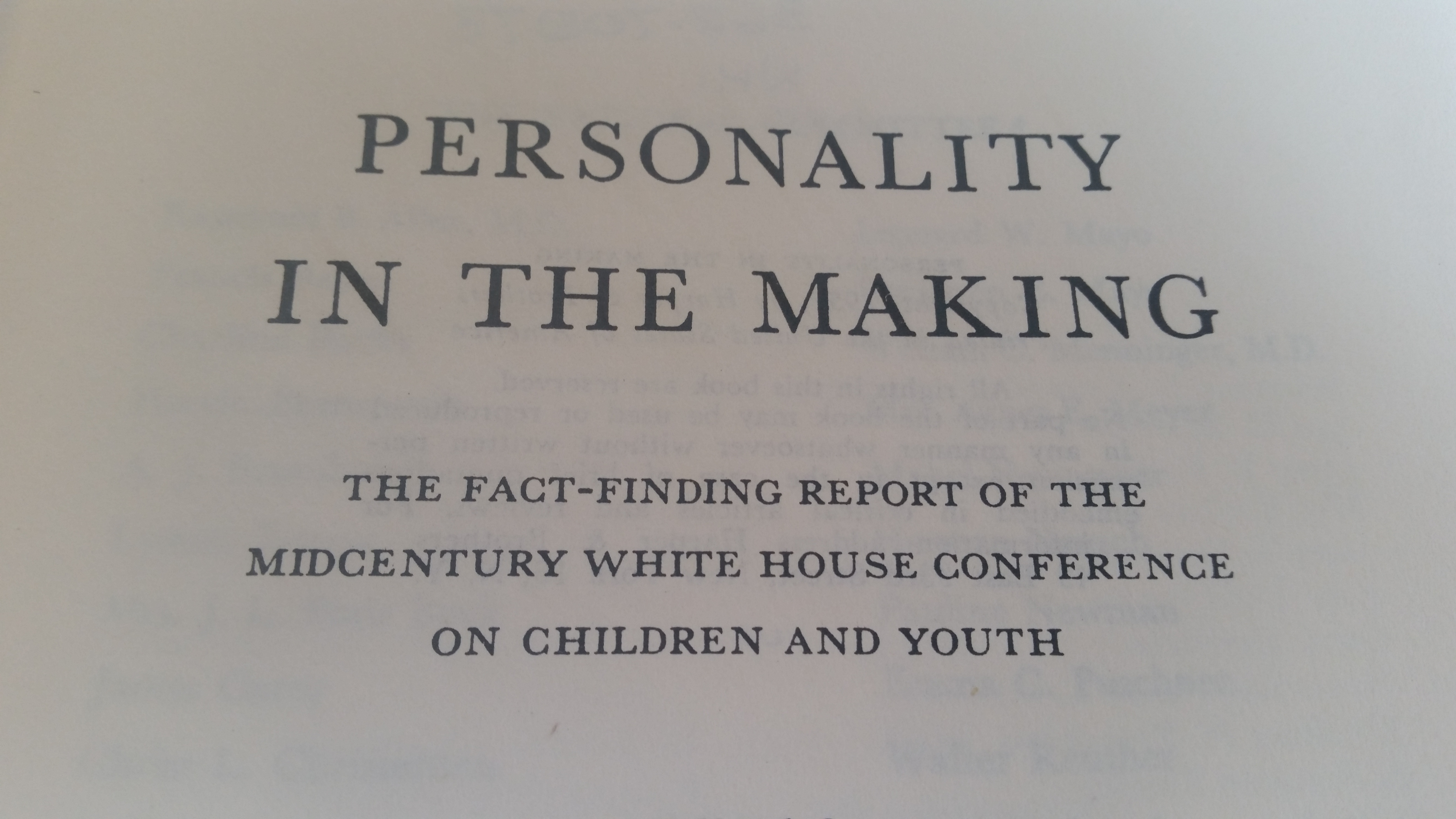
'Learning is complex... Purposes, feelings, attitudes, ways of life and personal dedications are learned as well as arithmetic, geography, history, and spelling. The latter are not and cannot be learned without ... [the former].' (Witmer and Kotinsky, 1952)
Bagley, W. (1921). Classroom management: Its principles and techniques. The Macmillan Company: London.
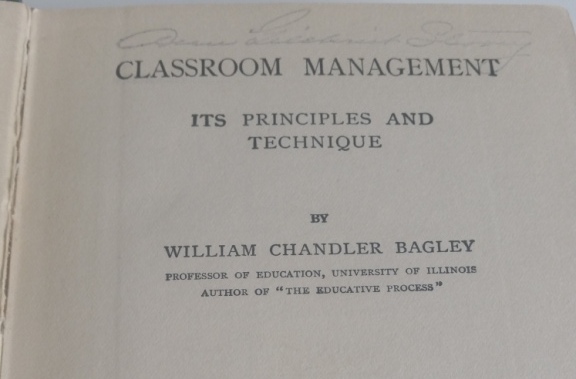
'The young teacher will surely ask ... "What shall I do when I have tried every device that I can think of, and still fail?" There is no explicit formula that will cover each specific case, but one general suggestion may be: Get order. Drop everything else if necessary, until order is secured.' (Bagley, 1921)
'The tactful teacher never blusters, never brags, never storms - but when occasion demands he acts swiftly, unerringly, effectively, without "fuss", without fear of consequences.' (Bagley, 1921)
Barzun, J. (1946). We Who Teach. Victor Gollancz Ltd: London.
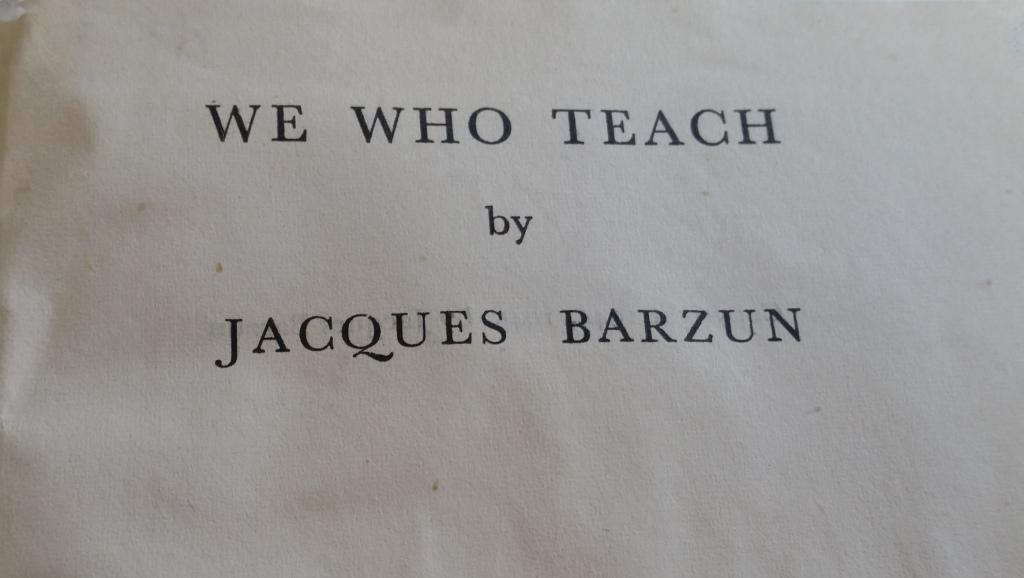
'The whole aim of good teaching is to turn the young learner, by nature a little copycat, into an independent, self-propelling creature ... that [can] work as his own buss to the limit of his powers.' (Barzun, 1946)
'[The teacher's] imagination must swarm with connecting links, factual illustrations, answers to unexpected questions. He must moreover, know how to correct without wounding, contradict without discouraging, coax along without coddling.' (Barzun, 1944)
Haine, H.E. (1961). Classroom Psychology. The Jacaranda Press: Brisbane.
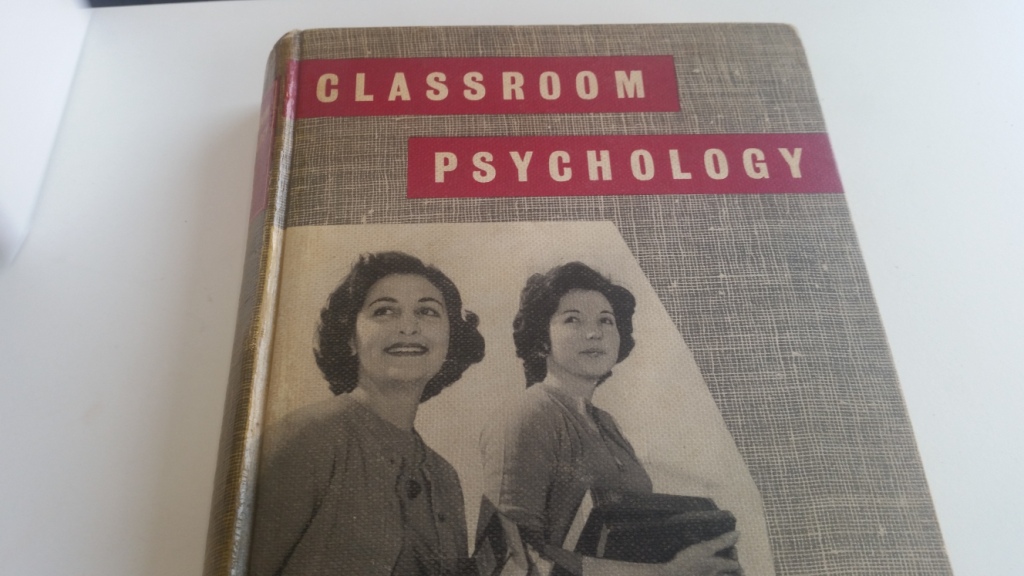
'We have only to reflect on our own reaction to [angry conditions] to see how hard it must be for a child to emulate the control of a ... mature adult.' (Haine, 1961)
'It is the task of the teacher to interest the children in their learning tasks, as well as to show them as far as possible why they are required to carry out these learning tasks.' (Haine, 1961)
'Learning should be associated with sentiments such as liking for the various subjects, ... or with a desire to develop more fully as a person.' (Haine, 1961)
Washburne, C. (1932). Adjusting the school to the child: Practical first steps. World Book Company: New York.
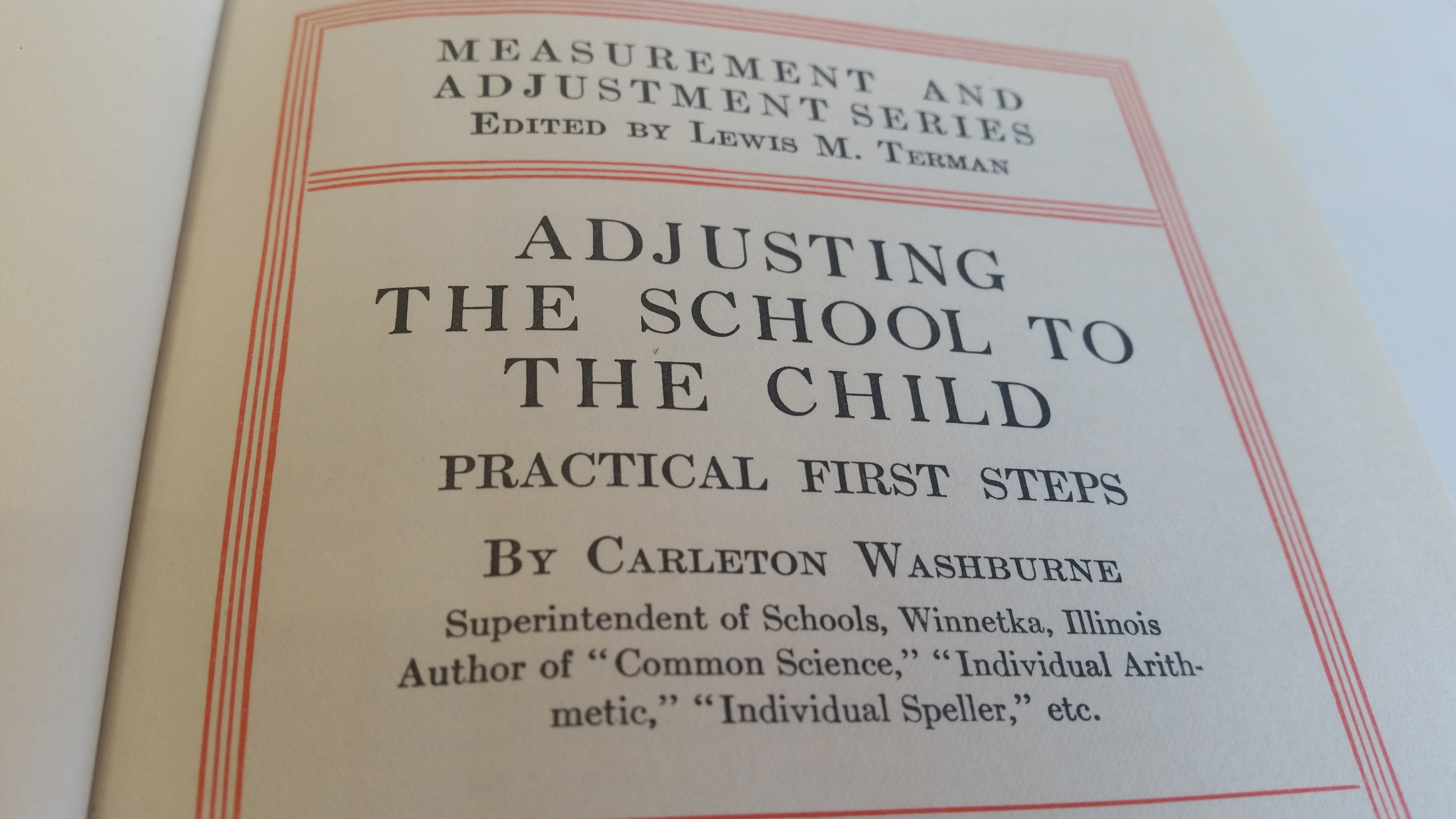
'In every English lesson the first consideration must be that the pupil shall have something to express and a real desire to express it.' (Washburne, 1932)
'Before anyone can adapt a subject to [the individual], he must determine specifically what he expects the children to master.' (Washburne, 1932)
Hubler, C. (1957). Working with children in science. The Riverside Press: Cambridge, Massachusetts.
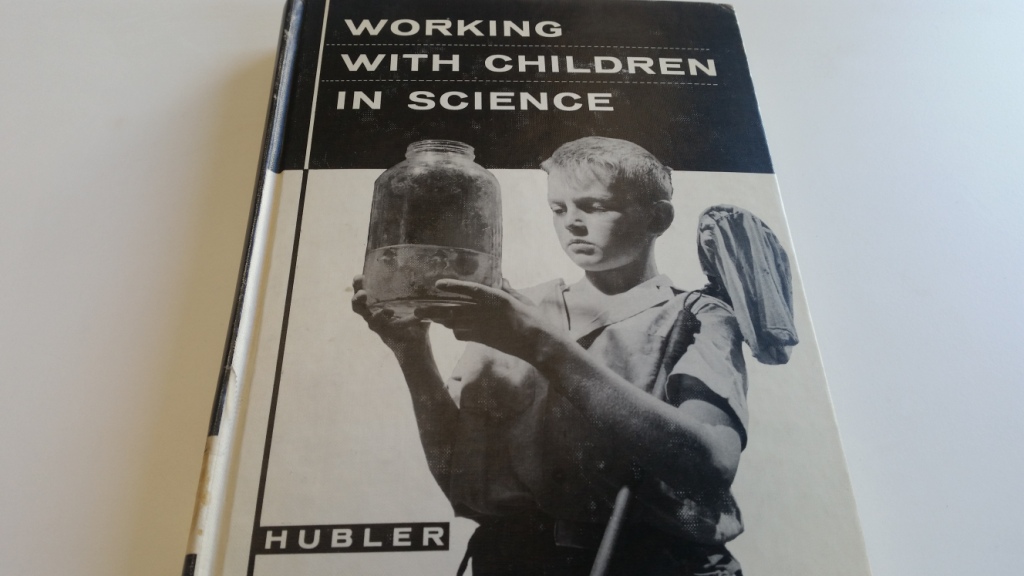
‘Progress in science has come from solving one problem at a time, gaining a limited understanding at each step, rather than attempting to explain everything at once. In the classroom too, achievement comes from undertaking whatever experiences seem worthwhile, rather than waiting to know all the answers even before the questions are asked.’ (Hubler, 1957)
'No teacher should fear science or be anxious because questions may be asked that he cannot answer. Unanswered questions are the essence of science.' (Hubler, 1957)
'When the teacher, like the scientist, accepts the view that no one can know all the answers, the fear will be gone, making room for the natural delight in exploring new situations.' (Hubler, 1957)
'Children are typically eager to make suggestions, accept responsibilities, and share in activities. In science, children can learn effective ways of working together, instead of learning to follow passively.' (Hubler, 1957)
'We clarify and develop our ideas by using them. The school should provide opportunity for children to learn to think and act upon their thoughts.' (Hubler, 1957)
Richardson, J. (1955). The active teacher: Training and Assessment. Routledge and Kegan Paul. London
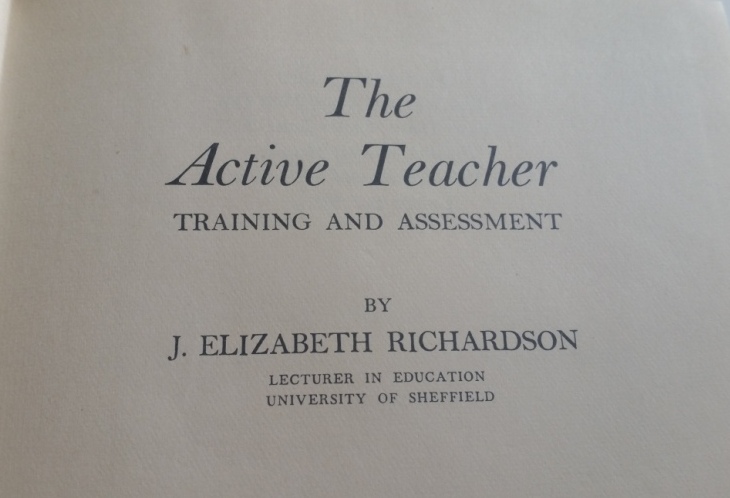
A teacher 'should ... help students acquire confidence in their own power to communicate ideas verbally, so that they can [establish] real contact with their pupils.' (Richardson, 1955)
'When a child is being trained to write imaginatively ... he is being shown how to use his eyes and ears, [to] awaken his emotional sensibilities and [to] communicate his experiences to others through the medium of words.' (Richardson, 1955)
Murphy, L., Ladd, H. (1944) Emotional Factors in Learning. Columbia University Press: New York.
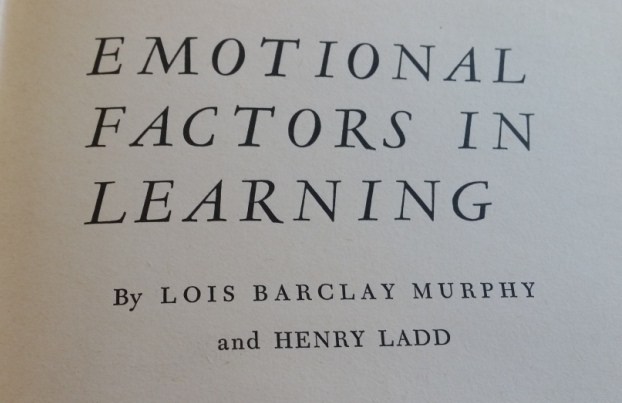
'Expecting [the student] to "work through" difficult pieces of the road will ultimately help her more than letting her retrace her steps till she finds a more smoothly paved avenue to follow.' (Murphy and Ladd, 1944)
'The criterion is never "What does [the student] want" or even "Can she take it?" but "What is our best guess about the direction in which she is heading and what will best help her to achieve progress.' (Murphy and Ladd, 1944)
Durland, F. (1952). Creative Dramatics for Children: A Practical Manual for Teachers and Leaders. The Antioch Press: Victoria.
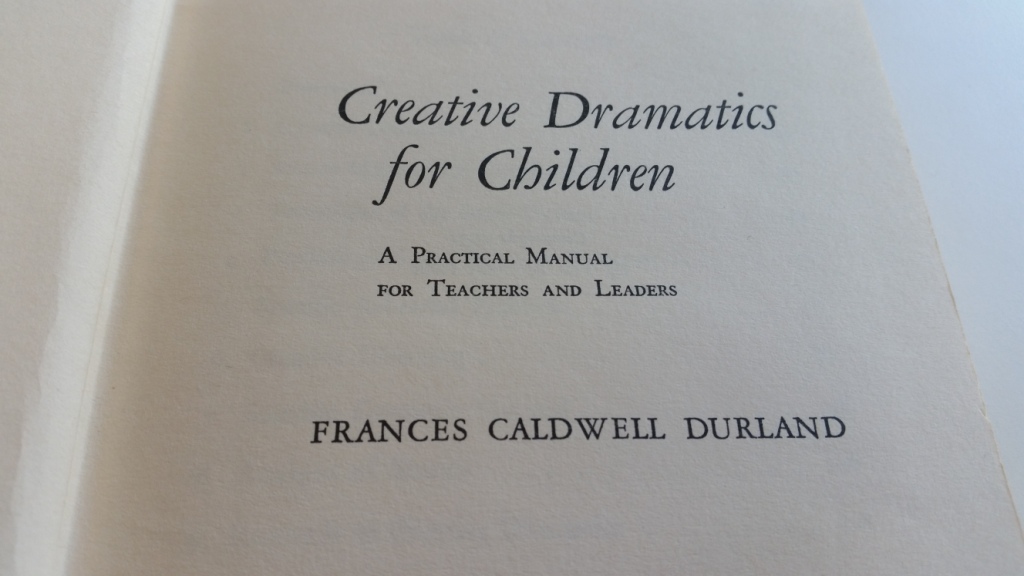
'Imagination is the quality of mind and spirit that enables one to understand experiences beyond his own. ... This capacity to imagine enriches not only ones own life, but that of others.' (Durland, 1952)
A teacher should 'be an inspiration to the student ... by inspiring him to believe in his own power and the ultimate success of his own creative effort.' (Durland, 1952)
'The creative class is the thinking class, it is the feeling class. If the teacher is using the creative process as a means of awakening her class, ... children will be more alert.' (Durland, 1952)
'Students inspired to a belief in their own capacities carry that away into other relationships.' (Durland, 1952)
‘The teacher [can] open up the gates so that each person may approach, in his own way, the threshold of his own mind.’ (Durland, 1952)
Morrison, H. (1932). The Practice of Teaching in the Secondary School. The University of Chicago Press: Chicago, Illinois.
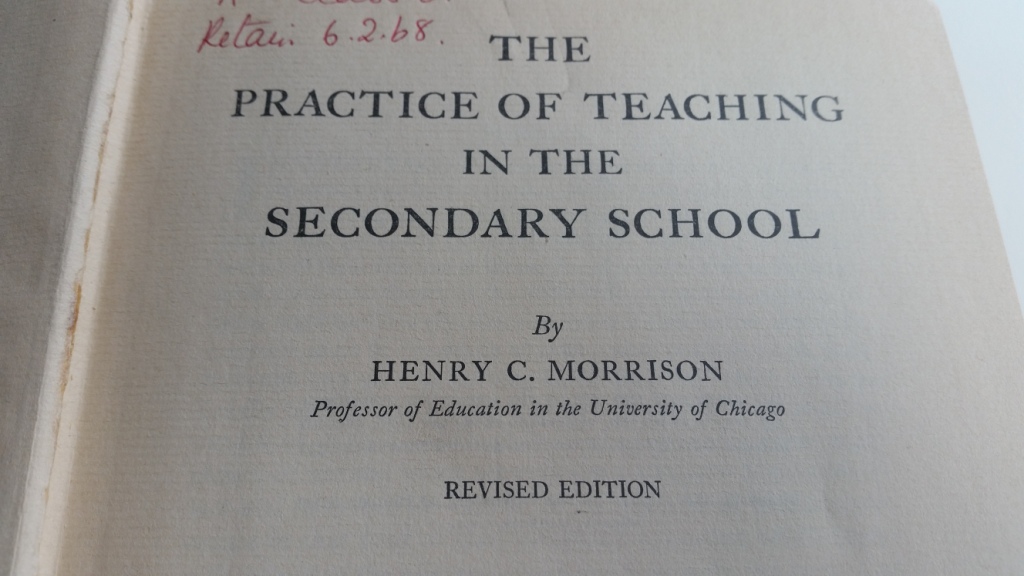
'The school is a unit in its influence upon the pupil. Every experience which he has in the school [affects] his attitude toward life.' (Morrison, 1932)
'The heart of teaching ... is explanation. The outcome ... is a new understanding, a new attitude of intelligence towards the present environment or towards the historical past.' (Morrison, 1932)
'It is true that we must seek in the child's behaviour for the evidences of changing attitude, but we may have good behaviour with no positive attitude at all.' (Morrison, 1932)
